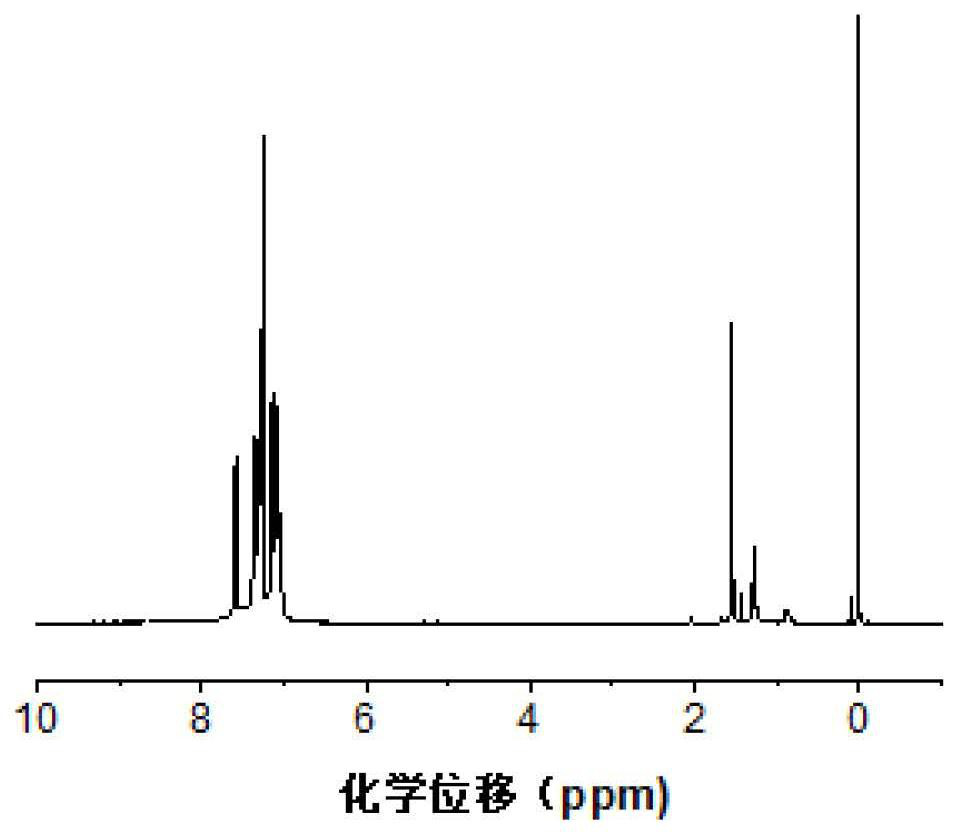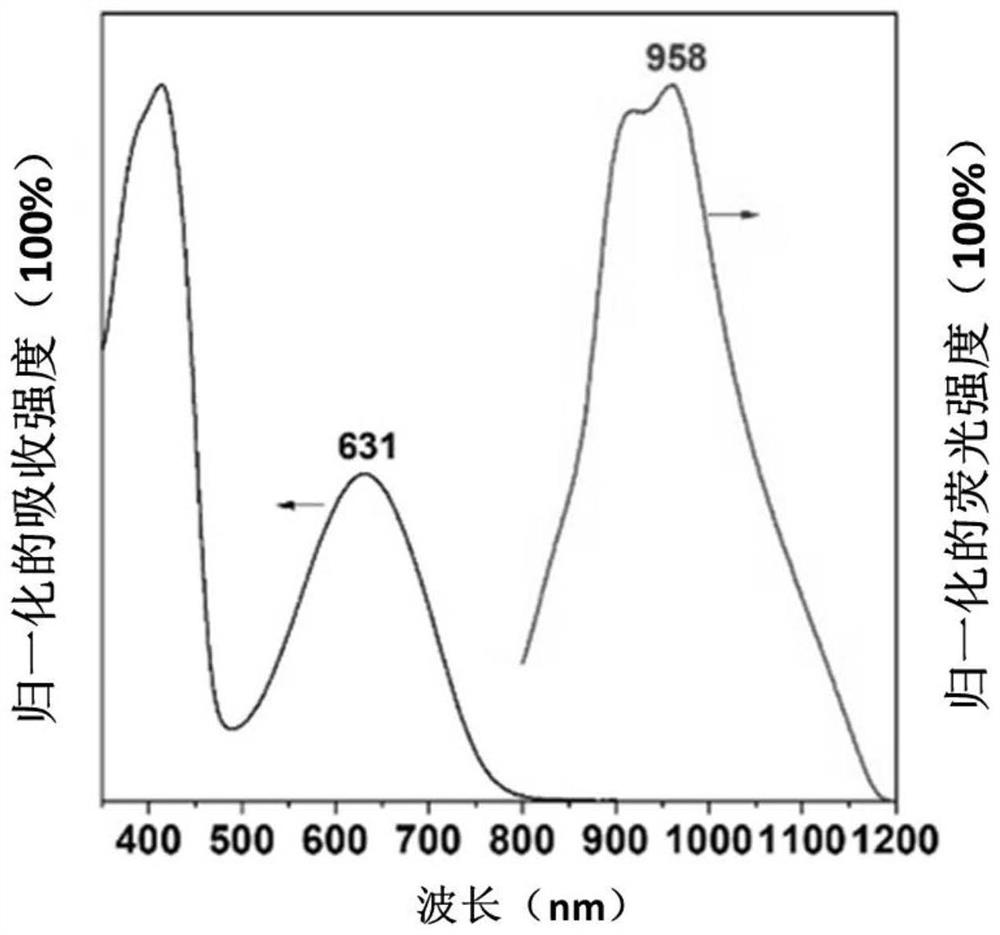Near-infrared two-region fluorescent probe molecule and nanoparticle for multi-mode diagnosis and treatment integration
A fluorescent probe and nanoparticle technology, applied in the field of biomedical materials, can solve problems such as difficult synthesis and complex structure, achieve good cell compatibility, broad development prospects, and inhibit tumor growth.
- Summary
- Abstract
- Description
- Claims
- Application Information
AI Technical Summary
Problems solved by technology
Method used
Image
Examples
Embodiment 1
[0049] The structural formula of the near-infrared second-region fluorescent probe molecule prepared in this example is shown in the following formula:
[0050]
[0051] The synthetic route of the near-infrared second-region fluorescent probe molecule (TP-TPA) includes the following 4 steps:
[0052] Step (1): Reduction Reaction
[0053]
[0054] In a protective gas atmosphere, compound 1-1 was mixed with zinc powder and ammonium chloride, and 10:1 methanol: water was added as a solvent, reacted at room temperature for 4 hours, and reduced to compound 1-2. Compound 1-2 can be It was directly put into the next step without purification, wherein, the compound 1-1 was disclosed in the literature (Synthesis and photovoltaic performance of a series of small band gap polymers, Journal of Materials Chemistry, 19(30), 5336-5342; 2009). Synthetic method Synthesis.
[0055] Step (2): Cyclization Reaction
[0056]
[0057] Compound 1-2 obtained in step (1) was mixed with benz...
Embodiment 2
[0065] The near-infrared second-region fluorescent probe molecule solution of Example 1 was mixed with the DSPE-PEG solution (the mass ratio of the near-infrared second-region fluorescent probe molecule and DSPE-PEG was 1:2), and added to water under ultrasonication, Nanoparticles (TP-TPANPs) were prepared by co-precipitation method.
[0066] Sample analysis
[0067] The hydrogen nuclear magnetic resonance spectrum and the carbon nuclear magnetic resonance spectrum of the near-infrared second-region fluorescent probe molecule prepared in Example 1 are as follows: figure 1 and figure 2 As shown, the successful synthesis of the near-infrared second region fluorescent probe molecule is proved.
[0068] The ultraviolet absorption spectrum and fluorescence emission spectrum of the near-infrared second-region fluorescent probe molecule prepared in Example 1 are as follows: image 3 As shown, the fluorescence emission wavelength is 958 nm; it belongs to the emission in the second...
PUM
| Property | Measurement | Unit |
|---|---|---|
| diameter | aaaaa | aaaaa |
| photothermal conversion efficiency | aaaaa | aaaaa |
Abstract
Description
Claims
Application Information
 Login to View More
Login to View More - R&D
- Intellectual Property
- Life Sciences
- Materials
- Tech Scout
- Unparalleled Data Quality
- Higher Quality Content
- 60% Fewer Hallucinations
Browse by: Latest US Patents, China's latest patents, Technical Efficacy Thesaurus, Application Domain, Technology Topic, Popular Technical Reports.
© 2025 PatSnap. All rights reserved.Legal|Privacy policy|Modern Slavery Act Transparency Statement|Sitemap|About US| Contact US: help@patsnap.com



